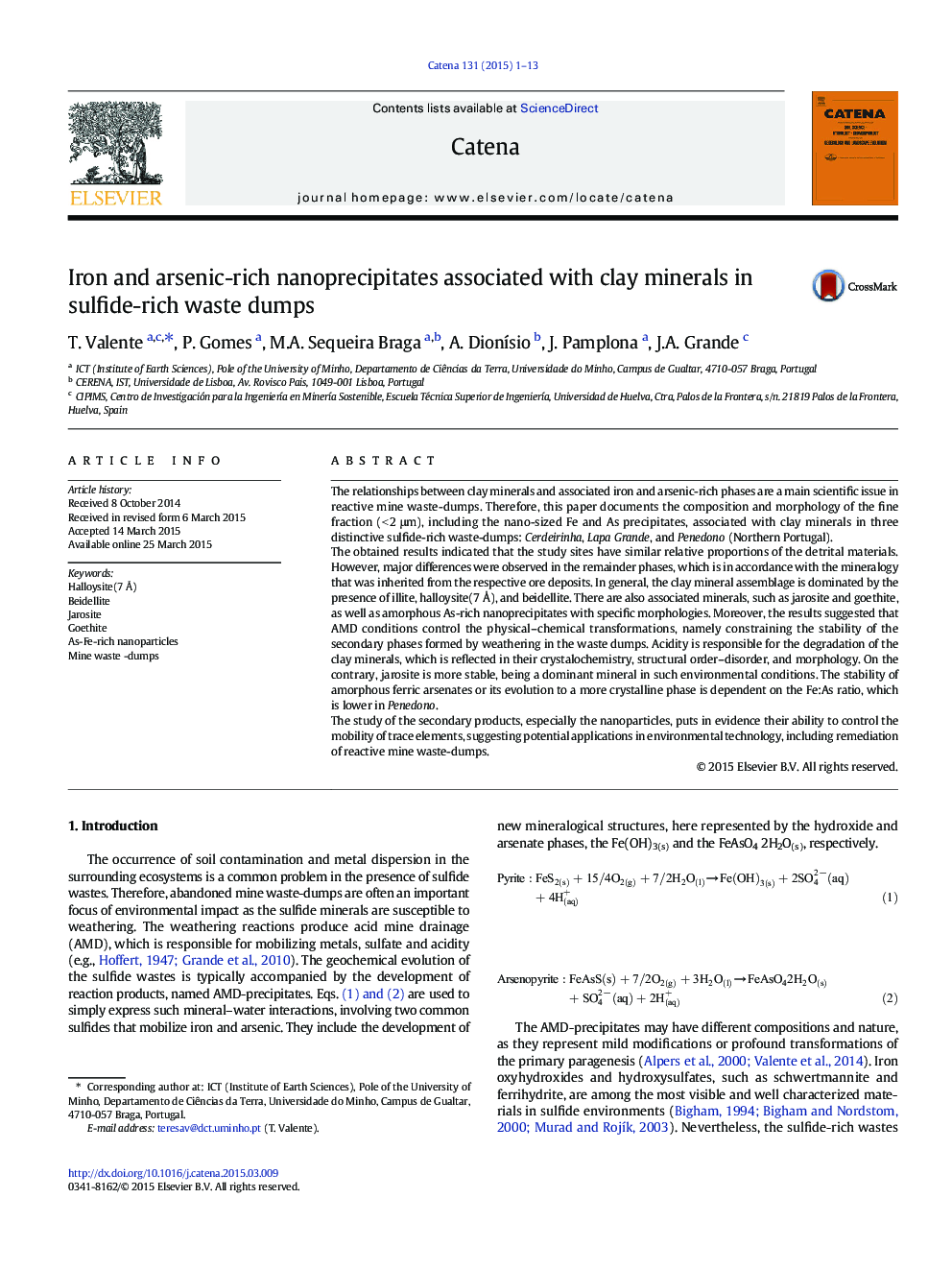| Article ID | Journal | Published Year | Pages | File Type |
|---|---|---|---|---|
| 4571120 | CATENA | 2015 | 13 Pages |
•Fine fraction including nano-sized Fe and As precipitates in waste dumps•Clay mineral assemblage dominated by illite, halloysite(7 Å), and beidellite•Jarosite and amorphous nanoprecipitates were the main sinks of As.•Amorphous As–Fe-rich nanoprecipitates are confined by the clay minerals.
The relationships between clay minerals and associated iron and arsenic-rich phases are a main scientific issue in reactive mine waste-dumps. Therefore, this paper documents the composition and morphology of the fine fraction (< 2 μm), including the nano-sized Fe and As precipitates, associated with clay minerals in three distinctive sulfide-rich waste-dumps: Cerdeirinha, Lapa Grande, and Penedono (Northern Portugal).The obtained results indicated that the study sites have similar relative proportions of the detrital materials. However, major differences were observed in the remainder phases, which is in accordance with the mineralogy that was inherited from the respective ore deposits. In general, the clay mineral assemblage is dominated by the presence of illite, halloysite(7 Å), and beidellite. There are also associated minerals, such as jarosite and goethite, as well as amorphous As-rich nanoprecipitates with specific morphologies. Moreover, the results suggested that AMD conditions control the physical–chemical transformations, namely constraining the stability of the secondary phases formed by weathering in the waste dumps. Acidity is responsible for the degradation of the clay minerals, which is reflected in their crystalochemistry, structural order–disorder, and morphology. On the contrary, jarosite is more stable, being a dominant mineral in such environmental conditions. The stability of amorphous ferric arsenates or its evolution to a more crystalline phase is dependent on the Fe:As ratio, which is lower in Penedono.The study of the secondary products, especially the nanoparticles, puts in evidence their ability to control the mobility of trace elements, suggesting potential applications in environmental technology, including remediation of reactive mine waste-dumps.
